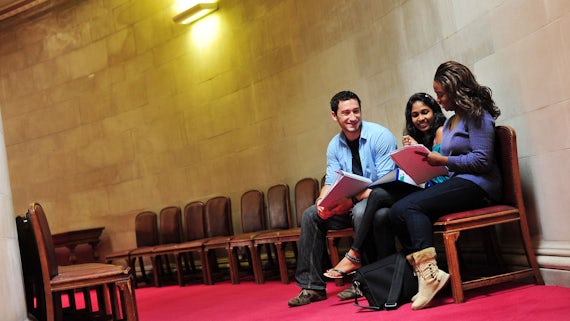Places of worship as symbols of unity and division
29 March 2018

Exploring how modern places of worship can often divide as well as unite communities was the theme of an event hosted by Cardiff University’s School of Geography and Planning on Wednesday 21 March 2018.
The event, The Politics of Religious Architecture: modern places of worship, was co-hosted in partnership with The Centre for the Study of Islam in the UK, and Cardiff University’s Religion, Faith and Society Research Group. It was part of a series of UK-wide discussions, championed by the Baroness Warsi Foundation.
Dr Richard Gale, from the School of Geography and Planning, explained the context and impetus for the event: “Our places of worship can reflect social identity and provide a sense of belonging – to place, community or country. However, they can also become focal points for conflict, pitching community insiders against outsiders. A recent increase in hate crime centred on religious buildings and their users is distressing to witness and raises many questions about community, planning, architecture and environment.”
He continued: “This event was an opportunity to hear from a diverse mix of speakers on a range of different aspects of this emotive debate.”
The Cardiff event welcomed a diverse mix of speakers to address issues including: the ways in which local planning authority decision-making on faith buildings has shifted over time, reflecting changing political priorities and underlying social and cultural attitudes; the meanings and attachments invested in religious space by different communities, and how these can anchor forms of social engagement; and the ways in which places of worship can be sites of connection and creativity.
The panel was encouraged to explore what the future is for places of worship, from architectural design to their changing meaning in the current environment. Specifically:
- should buildings be required to ‘blend in’ with existing structures and landscapes?
- how might local planners respond to the politicisation of religious architecture through the planning process, to mitigate the effects of stigma and exclusion?
- what positive approaches might be adopted to promote a more hopeful symbolism of religious buildings as spaces of encounter, creativity and understanding?
The event was well-attended and the audience engaged intelligently and critically with the speaker’s provocations, generating a lively, far-reaching and thought-provoking discussion.
As part of the UK-wide series of events (covering topics such as design, technology, gender equality, security and innovation), talks were held in Bradford, Woking, Liverpool, Birmingham, Cambridge, Leeds, Cardiff, Glasgow, and London.

